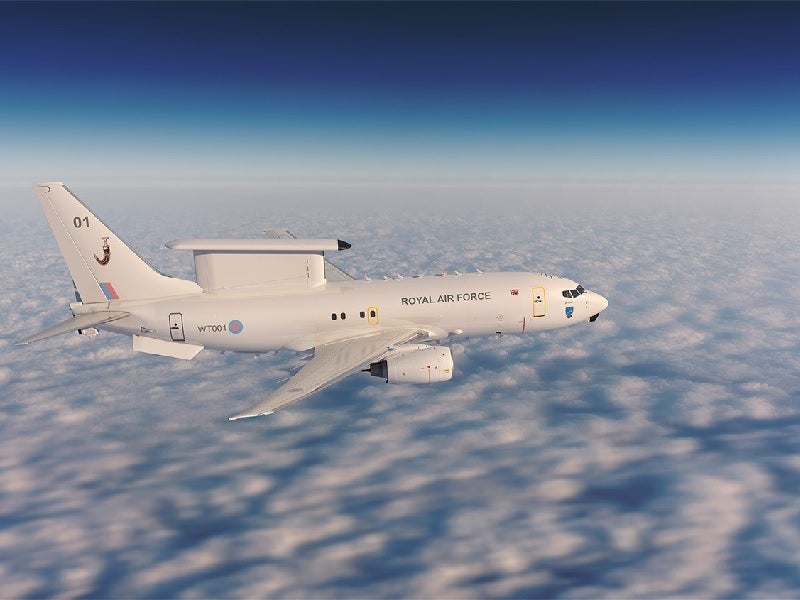
Continued delays to the introduction of new airborne early warning (AEW) platforms mean that 2023 will come and go with the UK unable to field an indigenous fixed-wing AEW capability, a further increase of a gap in UK national security capability.
The creation of this critical capability gap resulted from the early retirement of the E-3D Sentry platform from RAF service in 2021, while the replacement E-7 Wedgetail programme will not see first aircraft delivery until 2024, at the earliest. In addition, the initial operating capability (IOC), the point at which the aircraft will be able to begin undertaking security roles within the overall UK military structure, is even further away.
During a UK Defence Committee hearing on 29 November it was also revealed that the UK Ministry of Defence (MoD) is still drawing up a new business case for the E-7 programme, following the decision in 2020 to reduce the planned fleet of five aircraft to just three airframes. The aircraft are being provided by US defence giant Boeing, which also supports the type in service with South Korea, Australia, and Turkey.
Providing evidence to the committee, Anna Keeling, managing director of Boeing Defence UK, stated that delivery to the UK of the first E-7 Wedgetail would now take place “later in 2024”, rather than 2023 as originally planned.
Given these figures, and the retirement of the Sentry fleet in September 2021, the UK will have to endure a fixed-wing AEW capability gap that could now extend to more than 36 months before the first replacement platform is even delivered, with an even greater delay in reaching military IOC.
Citing difficulties in global supply chain, primarily as a result of the Covid-19 pandemic, Keeling also confirmed that Boeing UK was seeing an average delay of 244 days for in-country sourcing of long lead items and parts.
How well do you really know your competitors?
Access the most comprehensive Company Profiles on the market, powered by GlobalData. Save hours of research. Gain competitive edge.

Thank you!
Your download email will arrive shortly
Not ready to buy yet? Download a free sample
We are confident about the unique quality of our Company Profiles. However, we want you to make the most beneficial decision for your business, so we offer a free sample that you can download by submitting the below form
By GlobalDataUK company STS Aviation will convert three secondhand Boeing 737NG aircraft operated in the commercial sector into the E-7 Wedgetail configuration, which will deliver AEW capability to the UK military. The original business case for the fleet of five aircraft was valued at nearly $2bn.
The UK maintains a network of ground-based early warning sites, such as RAF Fylingdales in Yorkshire, to monitor the skies and space around the country for threats. However, fixed sites are vulnerable to first attack, and, theoretically, the destruction of such sites at any point in the next two years would leave the country unable to properly defend itself.
It is possible that this key gap in UK national security is being filled by the joint NATO E-3 capability based in mainland Europe, ironically using the same type of aircraft the UK withdrew from service more than one year ago.
Crowsnest specifications to be changed
It also emerged at the UK Defence Committee session that the Merlin Crowsnest rotary-wing AEW system, which is designed to provide the UK Royal Navy with its own embarked airborne surveillance platform onboard its Queen Elizabeth-class aircraft carriers, will undergo further changes following lessons learned by the operator on recent deployments.
Paul Livingston, UK chief executive at Lockheed Martin, said that since the company went on contract to deliver the Crowsnest capability, the Royal Navy has since changed what specifications the capability should have in the future. This will entail the removal of some functions from the overall system that have been deemed as unnecessary, while embedding new capabilities that were not originally included.
Livingston confirmed to the committee that Lockheed Martin was seeking to change specifications of the Crowsnest based on the needs of the UK MoD. The capability was deployed while on IOC with HMS Queen Elizabeth in 2021, but will remain in service for less than a decade with its expected withdrawal in 2029.







